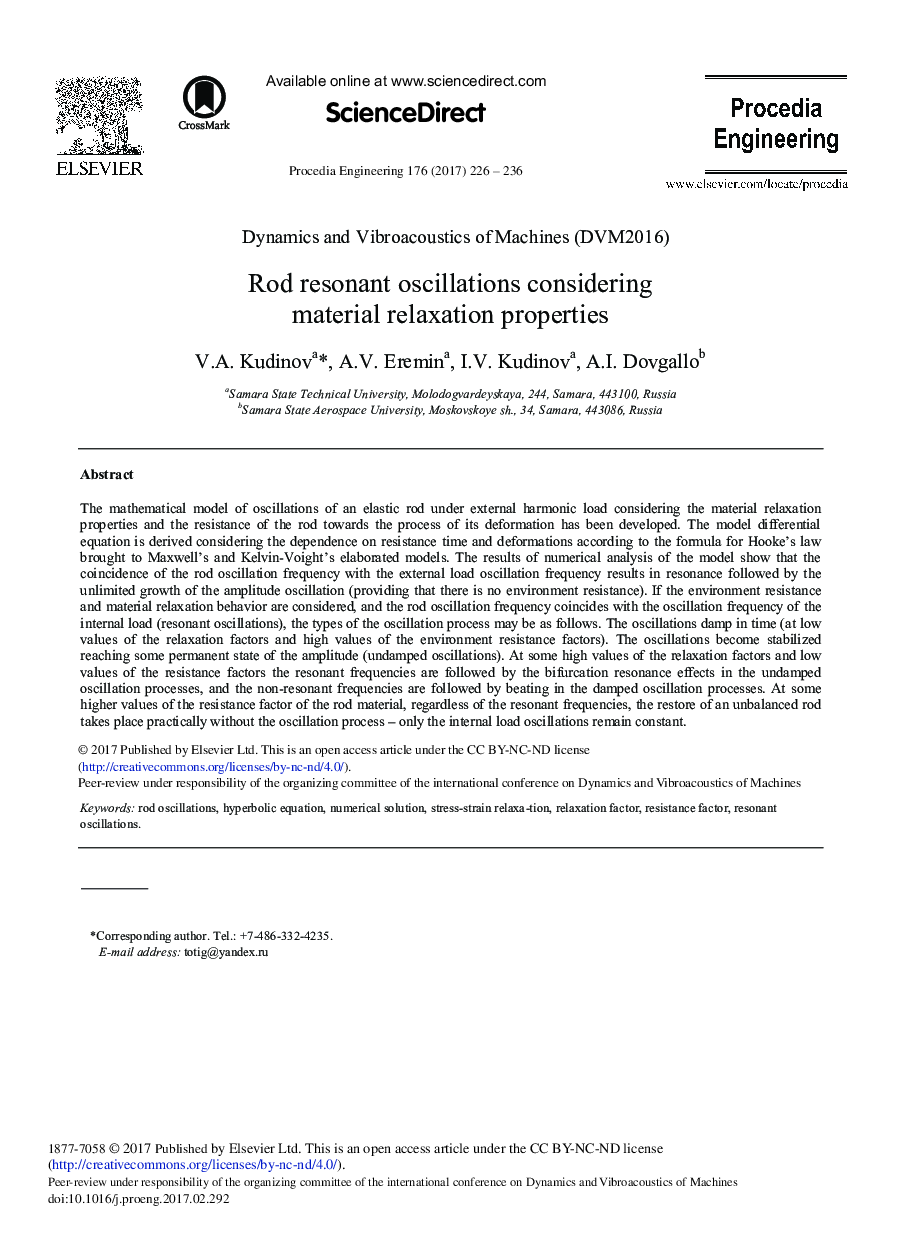| Article ID | Journal | Published Year | Pages | File Type |
|---|---|---|---|---|
| 5028047 | Procedia Engineering | 2017 | 11 Pages |
The mathematical model of oscillations of an elastic rod under external harmonic load considering the material relaxation properties and the resistance of the rod towards the process of its deformation has been developed. The model differential equation is derived considering the dependence on resistance time and deformations according to the formula for Hooke's law brought to Maxwell's and Kelvin-Voight's elaborated models. The results of numerical analysis of the model show that the coincidence of the rod oscillation frequency with the external load oscillation frequency results in resonance followed by the unlimited growth of the amplitude oscillation (providing that there is no environment resistance). If the environment resistance and material relaxation behavior are considered, and the rod oscillation frequency coincides with the oscillation frequency of the internal load (resonant oscillations), the types of the oscillation process may be as follows. The oscillations damp in time (at low values of the relaxation factors and high values of the environment resistance factors). The oscillations become stabilized reaching some permanent state of the amplitude (undamped oscillations). At some high values of the relaxation factors and low values of the resistance factors the resonant frequencies are followed by the bifurcation resonance effects in the undamped oscillation processes, and the non-resonant frequencies are followed by beating in the damped oscillation processes. At some higher values of the resistance factor of the rod material, regardless of the resonant frequencies, the restore of an unbalanced rod takes place practically without the oscillation process - only the internal load oscillations remain constant.
